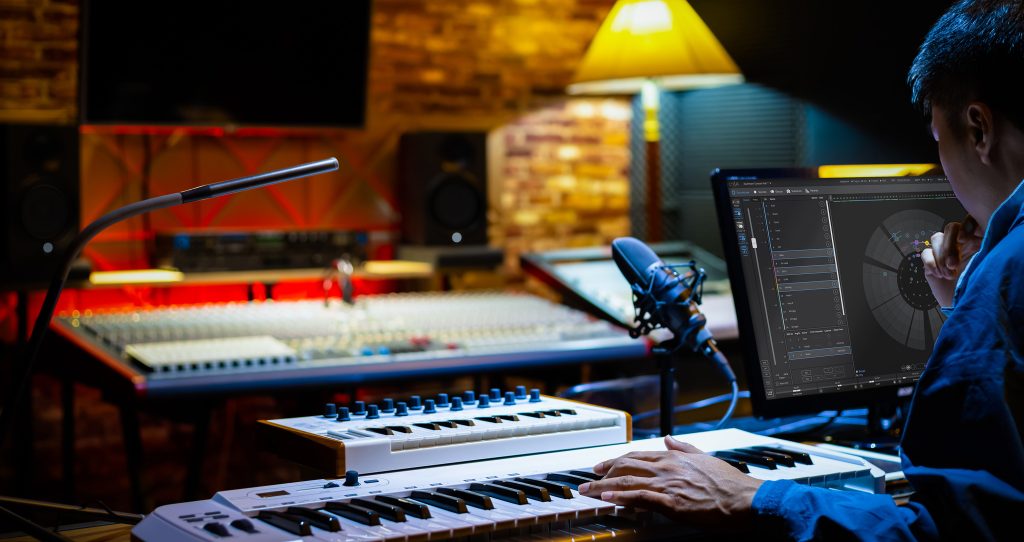Article
Sound is Art Sound and hearing weave intricate experiences, like a hidden conductor shaping our emotions

Do you appreciate the profound artistry in every whisper, shout, and note? Sound and hearing create intricate experiences, like a hidden conductor shaping our emotions. Whether it’s the birdsong outside your window or the crescendo of a movie soundtrack, there are ways to truly appreciate sound actively.
Sound transcends its physical origins as a phenomenon governed by the principles of physics, blossoming into art through the subjective lens of human perception. While the science of acoustics allows us to quantify frequencies, amplitudes, and wavelengths, artistry emerges in the deeply personal realm of experience. It is rooted in the diversity of the human auditory system, where each ear hears not just sounds but stories and each mind interprets not just signals but sensations.
Therefore, asserting that sound is art acknowledges that our perception of sound is as much an emotional and intellectual journey as it is a sensory process. The art of sound lies not in its measurable attributes but in its ability to resonate on a profoundly personal level. Sound becomes a canvas for the artist through this lens, a medium through which the intangible is expressed and the universal is made personal.

The Art of Sound
Like a kaleidoscope, art refracts human creativity, emotion, and intellect across various disciplines. Art is versatile and subjective. It’s a mirror reflecting personal expression, a bridge for communication, a catalyst for thought, and a canvas where emotions dance. Within its brushstrokes lie aesthetic principles and societal critiques. Yet, it doesn’t stop there. Like a cosmic traveler, art defies linguistic and cultural boundaries, uniting people in intangible ways.
So, how does sound play a role in all this artistry? Sound can be both a medium and a muse, transcending the confines of traditional music. Imagine sculpting with echoes, painting with vibrations, and composing with silence. Sound art births immersive environments—whether in our everyday lives or avant-garde installations—where listeners become participants. It challenges norms, whispers secrets, and sonically paints unseen landscapes.
Recognizing the art of sound expands our palette: the echo of footsteps and the crescendo of a distant train. Each note is a brushstroke. It stands as a testament to the limitless possibilities of creativity, inviting us to listen to the world with renewed curiosity and appreciation for the artistry surrounding us.
Sound Manipulates Emotion
Sound is a masterful manipulator of emotions. Music stands as the quintessential testament to sound’s profound emotional sway. By deliberately selecting rhythm, melody, texture, timbre, and harmony, composers and musicians create auditory landscapes that guide the listener’s mood, enhance well-being, stir excitement, and enrich comfort. These sonic choices do more than accompany a narrative; they amplify or transform a story’s emotional undertone.
Yet, the influence of sound extends far beyond the realm of music. Simple tones, varying in frequency, resonate with the body’s own vibrations, invoking profound emotional responses. The broad spectrum of noise, from the gentle hums used in meditation to the stark blasts that startle. At the heart of these experiences are acoustic characteristics—the essence of sound art. These characteristics inform our perception of space and do more than shape sounds; they change moods, creating an atmosphere where emotions can flourish.
The Missed Potential of Sound
The unparalleled capacity of sound to shape our emotional landscape reinforces its profound significance as an art form. Yet, its full potential remains remarkably untapped, revealing a landscape where the art of sound is often overlooked. While filmmakers, musicians, and advertisers skillfully harness sound to forge deep emotional connections, and military and police deploy it to induce fear, confusion, and control, many remain unaware of its power.

In architecture, the visual experience overshadows the other senses, missing opportunities to enhance well-being and functionality through sound. The healthcare industry has been slow to recognize the therapeutic potential of auditory experiences, and employers often neglect creating sonically optimized work environments. Education environments frequently fail to accommodate the critical role of sound in communication and knowledge absorption.
By embracing the art of sound across more sectors, we can unlock new dimensions of emotional depth, enhance human experiences, and cultivate environments that genuinely resonate with the essence of human needs and aspirations.
Embracing the Art of Sound
As we envision sound’s vast potential, the journey from a mere physical phenomenon to an art that touches the soul illustrates the boundless capacity of human creativity to transform and elevate our connection to the world around us.
Sound, in its rich and varied expressions, invites us to listen with intent, explore the uncharted territories of our emotional landscapes, and reimagine the spaces we inhabit. By recognizing and harnessing the power of sound, we open ourselves to a world where art transcends visual boundaries, creating immersive experiences that resonate with the essence of our being.


